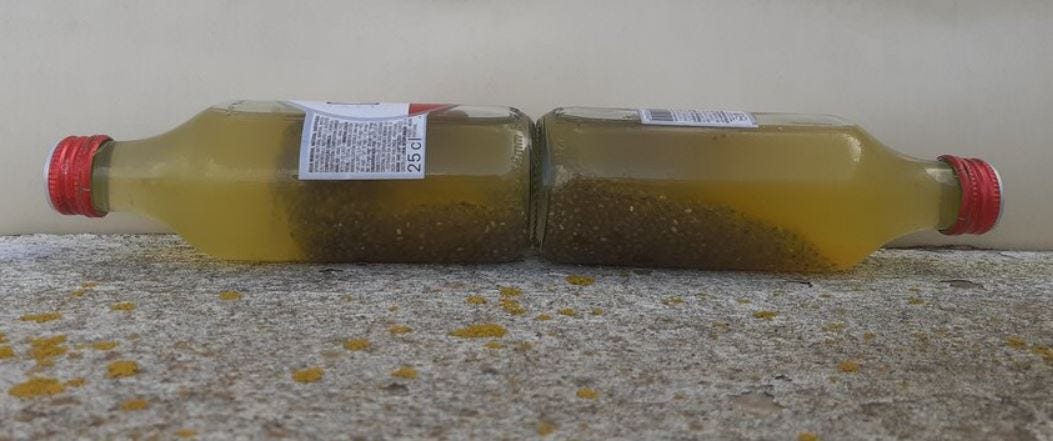Chia Seeds as a Model for Blood Health?
Structured sample (left):
Hydrophobicity and zeta potential both play important roles in the gelation process of chia seeds, a phenomenon that occurs when the seeds are exposed to water, leading to the formation of a mucilaginous, jelly-like structure. This gelation is a complex process involving interactions at the molecular level between the polysaccharides in the seed coat and water. Let’s explore how these two factors contribute to chia seed gelation:
1. Hydrophobicity
Hydrophobicity refers to the tendency of non-polar substances to repel water. In chia seeds, the seed coat contains hydrophilic (water-attracting) and hydrophobic (water-repelling) components, primarily in the form of polysaccharides and lipids.
Polysaccharides in chia seeds are highly hydrophilic, which drives the initial gelation process. When chia seeds are placed in water, these polysaccharides absorb water molecules rapidly and swell, forming a hydrogel network around the seeds.
Hydrophobic components, such as lipids in the seed coat, do not interact with water directly, but their presence can influence the arrangement of the polysaccharides and the overall structure of the gel. The interaction between hydrophilic and hydrophobic components creates a balance that stabilizes the gel structure, ensuring that it holds water but doesn’t dissolve into the solution.
The hydrophilic parts of the seed coat facilitate water absorption, while the hydrophobic parts contribute to the structural integrity of the gel, helping to trap water and form a stable, jelly-like consistency.
2. Zeta Potential
Zeta potential refers to the electrical charge on the surface of particles in a colloidal suspension, which affects their stability. In the case of chia seed gelation, the zeta potential of the seed surface influences how the polysaccharides and other components of the seed interact with each other and the surrounding water.
Charge on the seed coat polysaccharides: When chia seeds are placed in water, some of the polysaccharides that swell and form a gel carry a slight negative charge. This charge creates electrostatic repulsion between polysaccharide chains, preventing them from aggregating too quickly or collapsing back onto each other.
Stabilization of the gel: A moderate negative zeta potential helps stabilize the gel by maintaining enough repulsion between polysaccharide molecules to keep the network open and hydrated. This allows water to remain trapped within the gel structure, contributing to its viscosity and gel-like appearance.
If the zeta potential were to be significantly reduced (e.g., by changing the pH or adding ions), the electrostatic repulsion could decrease, leading to aggregation and collapse of the gel, making it less stable and potentially causing water to leak out.
Combined Effect in Gelation:
Hydrophobicity drives the formation of a stable matrix by balancing the interaction of hydrophilic and hydrophobic components, allowing chia seeds to absorb and trap large amounts of water.
Zeta potential regulates the charge on the polysaccharide molecules, preventing excessive aggregation and ensuring that the gel maintains its structure and stability over time.
Together, these factors help form the viscous, jelly-like gel seen in hydrated chia seeds. Hydrophilic forces pull in water to create the gel, while zeta potential prevents the gel network from collapsing. Hydrophobic regions maintain the overall integrity of the gel, ensuring it remains cohesive and stable.



